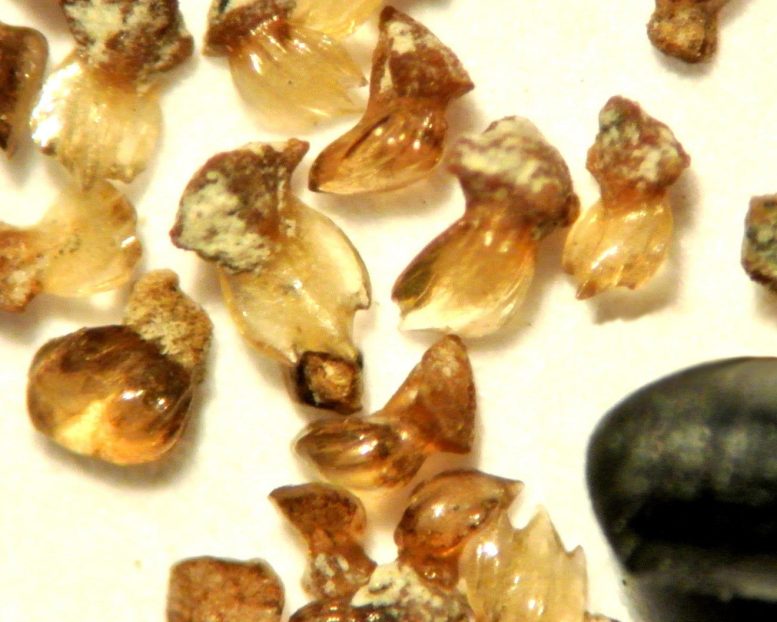
A ground-breaking study offers an unprecedented reinterpretation of the extinct Megalodon, suggesting that this ancient shark was a slow swimmer that used its warm-bloodedness for efficient digestion and nutrient absorption. Contrary to its portrayal as a monstrous, fast-moving predator, the research proposes that Megalodon was an ‘average swimmer’, based on the lack of closely-spaced ridges on its minuscule ‘placoid scales.
A recent study led by Professor Kenshu Shimada challenges the conventional view of the extinct Megalodon, suggesting it was a slow swimmer that utilized its warm-bloodedness for digestion and nutrient absorption, contributing to its enormous size.
Reexamining Megalodon: New Study Findings
A novel study discloses that the iconic and extinct Megalodon, also known as the ‘megatooth shark’, was in fact a slow-moving creature that used its warm-bloodedness to aid digestion and nutrient absorption.
Paleobiology professor Kenshu Shimada of DePaul University, along with his co-authors, has presented a revolutionary reinterpretation of the lifestyle and biology of Otodus megalodon, the ancient shark that lived almost globally approximately 15 to 3.6 million years ago.
This groundbreaking study, which challenges conventional beliefs about Megalodon’s swimming speed, is featured in the international scientific journal, Historical Biology.
Portrayal and Perception of the Megalodon
Otodus megalodon has often been depicted as a gargantuan, monstrous shark in novels and films, such as the 2018 sci-fi thriller “The Meg” and the forthcoming “Meg 2.” While the species was certainly enormous, the maximum estimated length is about 65 feet (20 meters).
New Evidence and Insights
The recent study hinges on the discovery of minute scales, more accurately known as ‘placoid scales’, from O. megalodon. These were found within rock fragments surrounding a previously identified tooth set of this fossilized shark from Japan.
“Our big scientific findings come from ‘tiny evidence’ as small as grains of sand,” says Professor Shimada.

Close-up view of tiny placoid scales of the iconic extinct megatooth shark, Otodus megalodon, compared to a tip of a 0.5-mm mechanical pencil lead on the bottom right corner. Credit: DePaul University/Kenshu Shimada
Prior understanding of O. megalodon‘s biology was largely founded on its colossal teeth and vertebrae. It was hypothesized to be partially warm-blooded or regionally endothermic — much like large modern predatory sharks such as the makos and great white sharks. Traditionally, O. megalodon was assumed to be an active, fast swimmer. However, the new study unveils that its minuscule placoid scales lack the closely spaced ridges or ‘keels’ typical of speedy sharks. “This led my research team to consider O. megalodon to be an ‘average swimmer’ with occasional bursts of faster swimming for prey capture,” explained Shimada.
New Perspectives on Megalodon’s Warm-Bloodedness
The study also brings forth a new paradox. Despite the strong support for regional endothermy in O. megalodon, based on another recent study where Shimada had a crucial role, it was unclear how this prehistoric shark utilized the high levels of metabolic heat generated by its warm-bloodedness without being a vigorous swimmer.
Upon examining existing literature, the researchers identified another potential function of endothermic body physiology that had been overlooked in O. megalodon‘s biological context: facilitating digestion, and absorbing and processing nutrients.
“It suddenly made perfect sense,” said Shimada. “Otodus megalodon must have swallowed large pieces of food, so it is quite possible that the fossil shark achieved the gigantism to invest its endothermic metabolism to promote visceral food processing.”
Reference: “Tessellated calcified cartilage and placoid scales of the Neogene megatooth shark, Otodus megalodon (Lamniformes: Otodontidae), offer new insights into its biology and the evolution of regional endothermy and gigantism in the otodontid clade” by Kenshu Shimada, Yuta Yamaoka, Yukito Kurihara, Yuji Takakuwa, Harry M. Maisch IV, Martin A. Becker, Robert A. Eagle and Michael L. Griffiths, 23 June 2023, Historical Biology.
DOI: 10.1080/08912963.2023.2211597
Funding: National Science Foundation Sedimentary Geology and Paleobiology Award to M.L.G. and M.A.B





Be the first to comment on "Gigantic Insights: Tiny Scales Uncover Megalodon’s Slow Speed and Huge Hunger"